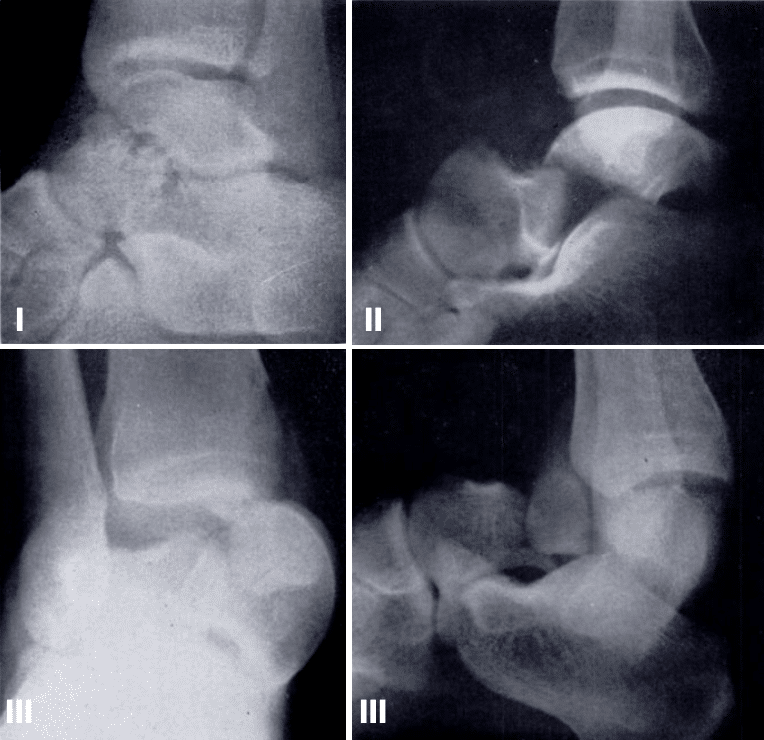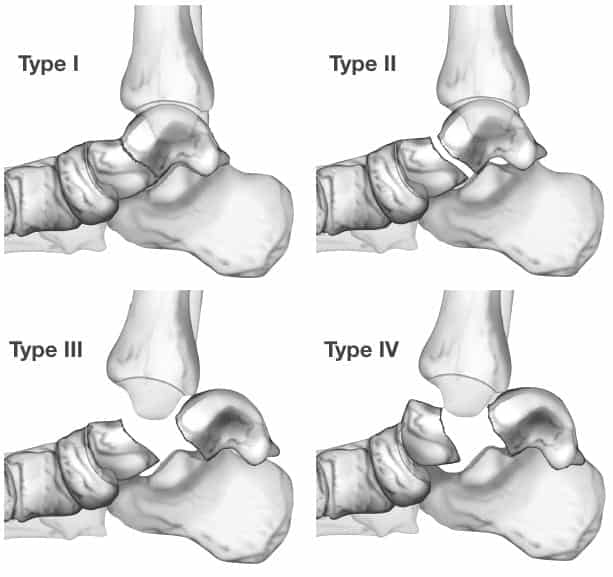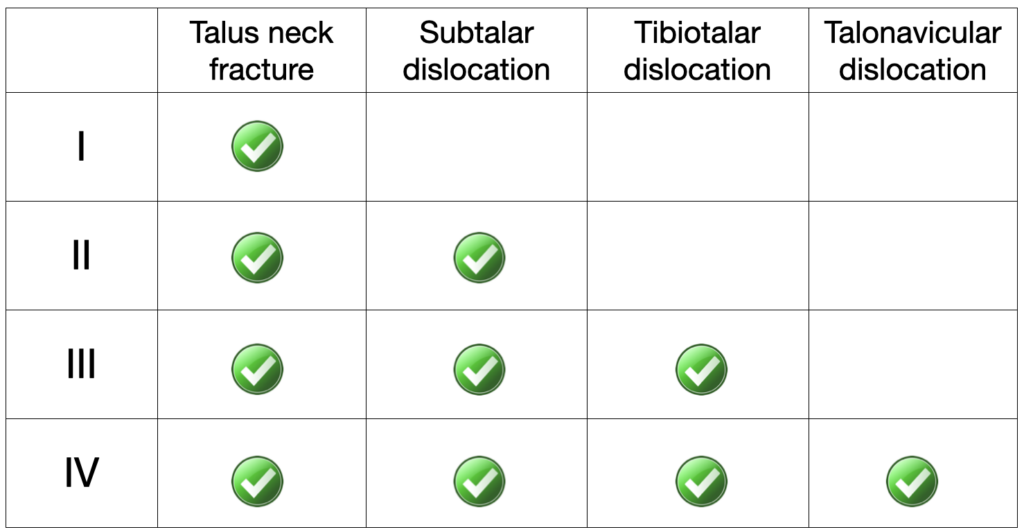Leland G. Hawkins
Leland Greene Hawkins (1933-1991) was an American orthopedic surgeon.
His research interests were vast, publishing on topics ranging from the use of a Bier block for upper extremity fractures and dislocations to the systemic and local complications of intra-arterial injection of street drugs into the upper extremity.
Hawkins established his eponymous classification system for vertical neck fractures of the talus in 1970. The Hawkins Classification revolutionized management and helped quantify the risk of progression to avascular necrosis
Biography
- Born on October 11, 1933 in Los Angeles, California
- 1956 – Bachelor’s degree Beloit College , Wisconsin
- 1960 – Graduated medicine from the University of Chicago, School of Medicine
- 1961-1965 Orthopaedic surgery residency, University of Iowa
- 1965 – Masters thesis “A pathological and physiological investigation into a series of rabbits with fat embolism created by the intravenous administration of homogenized rabbit morrow.”; initial 13 case review of lateral process fractures of the talus
- 1967 – Review of all talus fracture 1943-1967 at the University of Iowa leading to his seminal paper in 1970
- 1971 – Associate Professor of Orthopedic Surgery at the University of Colorado
- 1973 – Private practice Cedar Rapids, Iowa. President of the Iowa Medical Clinic and member of St. Luke’s Hospital and Mercy Hospital Medical staff
- Died on November 12, 1991 in Cedar Rapids, Iowa
Medical Eponyms
Hawkins Classification of Talus fractures (1970)
Classification system for vertical neck fractures of the talus, the commonest type of talus fracture. High energy injury usually associated with forced dorsiflexion and axial load. Associated with risk of avascular necrosis (AVN)
In 1970, Hawkins described injury patterns and avascular necrosis (AVN) rates in a series of 57 vertical neck fractures of the talus in 55 patients from three different institutions. All 55 patients sustained forced dorsiflexion injuries, similar to the mechanism described as Aviator’s Astragalus by Anderson in 1919. Originally classified into three types (Types I-III)
When faced with the decision of how to manage a vertical fracture of the neck of the talus, the physician must clearly distinguish between two problems. First is a method of satisfactory primary treatment of the fracture, and second, the recognition and management of the avascular necrosis which may follow when the fracture is associated with dislocation of the body.

Group I: Non-displaced fracture of the neck of the talus in a 22 year-old involved in a motor-cycle accident. Note that the fracture line extends into the body of the talus.
Group II: Fracture-dislocation of the neck of the talus; 33 year-old pilot who survived the crash of a small plane. Note the posterior dislocation of the body of the talus on the calcaneus.
Group III: Fracture-dislocation of the neck of the talus; 16 year-old involved in a motor-cycle accident. Note the vertical fracture of the medial malleolus and medial dislocation of the body which is wedged between the tibia and calcaneus. Hawkins 1970
1978 – Canale and Kelly added Type IV
- Hawkins Type I: Non-displaced talus neck fracture
- Hawkins Type II: Talus neck fracture with subtalar dislocation
- Hawkins Type III: Talus neck fracture with subtalar and tibiotalar dislocation
- Hawkins Type IV: Talus neck fracture with subtalar and tibiotalar and talonavicular dislocation
Major Publications
- Hawkins LG. Fractures of the lateral process of the talus. J Bone Joint Surg Am. 1965; 47: 1170-5.
- Hawkins LG. Local Pasteurella multocida infections. J Bone Joint Surg Am. 1969; 51(2): 362-6.
- Hawkins LG. Fractures of the neck of the talus. J Bone Joint Surg Am. 1970; 52(5): 991-1002.
- Hawkins LG. Intravenous lidocaine anesthesia for upper extremity fractures and dislocations. J Bone Joint Surg Am. 1970; 52(8): 1647-50.
- Hawkins LG. Laparotomy at the time of pelvic fracture. J Trauma. 1970; 10(8): 619-23.
References
Biography
- Day MA, Compton JT, Buckwalter JA 5th. Leland G. Hawkins, MD-His Life and Orthopaedic Legacy: Talus Fractures and the Hawkins Classification. Iowa Orthop J. 2018;38:1-8.
- Obituary. Leland G. Hawkins. JAMA. 1992;267(12):1685-1686
- Bibliography. Hawkins, Leland Greene. WorldCat Identities
Eponymous terms
- Miller OL, Baker LD. Fracture and fracture-dislocation of the astragalus. Southern Medical Journal. 1939; 32(2):125–136.
- Coltart WD. Aviator’s astragalus. J Bone Joint Surg Br. 1952;34:545–566
- Cadogan M. Hawkins classification – Eponym A Day. Instagram
- Eponymythology: Eponymous ankle and talus injuries. LITFL
[cite]



